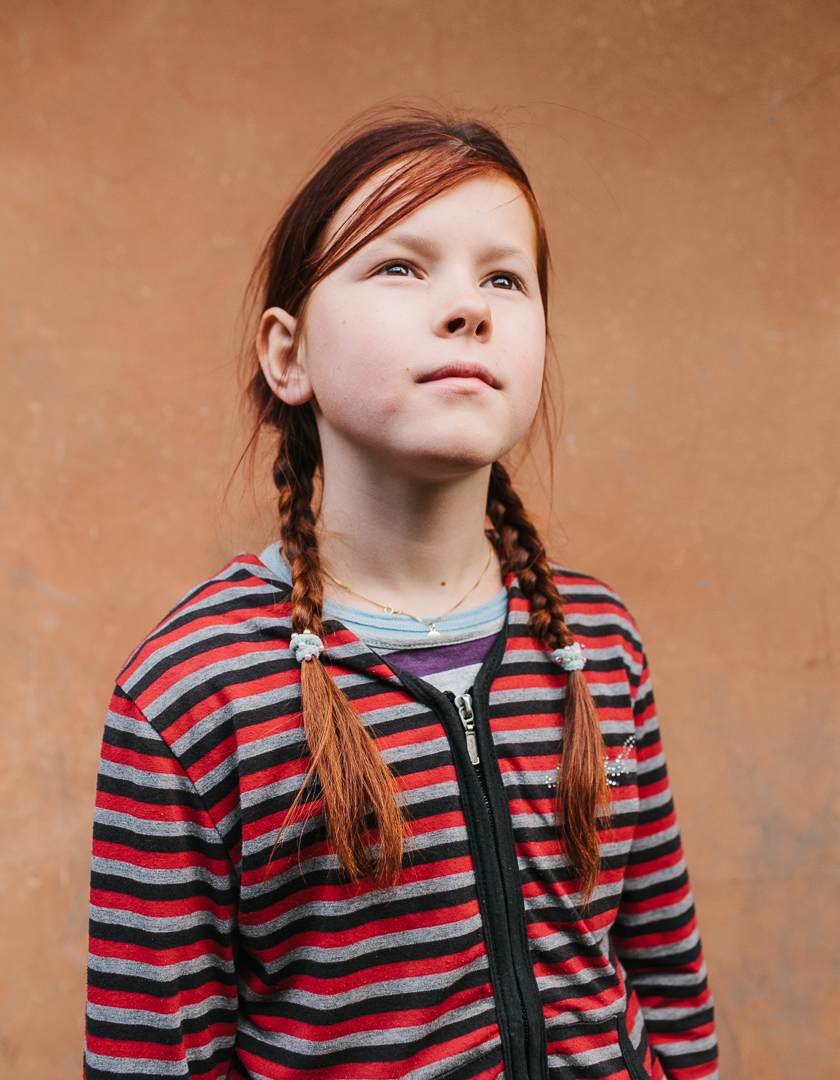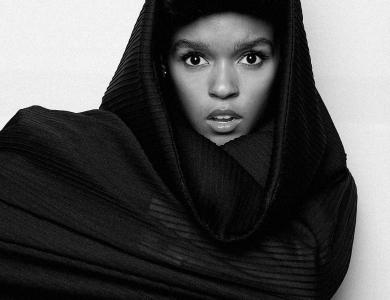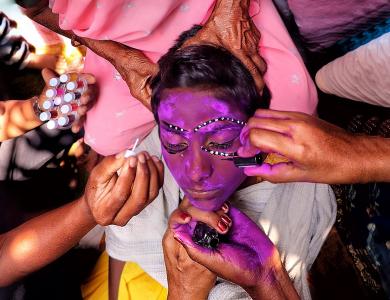
Ahead of the 2020 ZEISS Photography Award announcement this Tuesday, October 15, 2019, past winner of the prize Kevin Faingnaert shares some of his most recent work with us.
Kevin will be taking over our Instagram feed this week (October 6 to 12, 2019), sharing a selection of travel portraiture shots.
Hello! First of all please introduce yourself and tell us how you got into photography
Hi! I’m 33 years old and I live and work in Gent, Belgium. I have a degree in Sociology. Photography has always been a hobby of mine since I was a teenager. After University my hobby became more serious but I still had a day job. Photography was becoming more demanding so I decided to quit my job (best day of my life) and concentrate on photography full time. After a few intense but fun years, I finally made a lifelong dream come true. I consider myself a social documentary photographer, mainly focusing on small groups and communities that are removed from mainstream culture. Next to making documentary stories, I’m regularly hired to shoot portraits for a number of international publications and companies. When not on assignment I can be found hanging around the darkroom, ripping my arms off my body at the climbing hall, or riding my bike to the pub.
Why do you shoot film?
I shoot both film and digital. I shoot mostly digital for commissioned work and film for personal projects. I shoot film because I love the craft involved in it. I just like looking through the viewfinder of my Mamiya RZ67. It shows the world so beautifully. In terms of outcome, the differences between film and digital are getting smaller and smaller. I’m working on a digital medium format camera since last year, which makes me shoot digital more. I need to invest a lot of time in shooting film: the shooting process is longer, then there's going the photo lab to develop the film, then cleaning and scanning the film at home…it’s fun but it all takes time. And time is becoming more precious when taking on more jobs. Every year is becoming busier than the last.
You seem to work more on project-based works rather than single images, do you any tips for when it comes to picture editing/sequencing?
I recently read an interview with the Pixies where they described their style as 'We play loud and we play quiet.' I can relate to this as I feel exactly the same way with my projects. I tend to sequence images like my favorite music tracks, so mixing up heavier, stronger images with the more tranquil, quiet pictures.
Don't always choose the best and most impressive images, but also think about how they complement each other and what images you need to build up to something. A boring image I once overlooked can suddenly become very important when building a sequence. More than building a strong narrative, I want my images to rhyme and to follow a certain rhythm. I want them to be read like a poem or a song.
I usually put around 50 images on the floor in my studio, where they stay for around two weeks. Every day I look at them and start removing images, swapping them, putting others back in until the edit and sequence feel complete.
How do you balance personal and commissioned work?
For years, I kept around one month free in a year to work on personal projects. Lately, I’m having a harder time keeping a month free.
This year, for example, I haven’t succeeded in putting one month aside. More clients approach me for assignments, and it’s hard for me to say no to some. Especially because some assignments almost feel like personal work. The line between my personal and commissioned work is becoming vaguer. Some magazines are giving me the freedom to do what I want when they commission me for a shoot and that might be a reason why I don’t feel the urge to go and shoot personal work.
In your pictures, you really capture the sense of a place. What kind of research do you do before a shoot?
There are all kinds of research I do and it really depends on the shoot. Studying the map and knowing the region well is always on my list. I look for other stuff which has been made. I look for images on Google and on Instagram. I visit a place on Streetview or Google Earth. I check where and when the sun rises and sets, which is important for some landscapes. When I’m in the region and scouting for locations, I try to take my bicycle with me and drive around for an hour every day It keeps me fit and it enables me to find places that I would normally overlook when driving. I also hike a lot, which enables me to take in landscapes slowly and focus on details.
For portraits, I always read Wikipedia pages and interviews before photographing someone. Sometimes sitters are surprised that I know so much about them. If a sitter feels you’re serious about the shoot, they’ll also do an extra effort to make something work.
In a lot of your portraits, the sitters aren't looking at the camera, why?
Before making a portrait I try to think what I want to say about the sitter or how I want the sitter’s character reflected in the image. With this idea in mind, it’s easier for me to decided what will work best: looking straight in the camera, looking down or up, looking next to the camera…When they’re not looking at the camera, it means they’re looking at something else. To me, it suggests there’s something more than what it’s in the frame. The viewer might wonder what the sitter is looking at, or what he or she is thinking about. I can leave this open, or I can put another image in the edit which shows something more to tell the story. That can be detail, a landscape, another person.
Your projects have been published in many international magazines, do you have any tips for photographers pitching feature ideas to picture editors?
I think it’s important you’re thoughtful about your pitch and that you do your research. It’s one thing to come up with an interesting idea, but it’s another to pitch it to the right magazine. You have to be sure it makes sense for that specific publication. When I pitch, I mostly pitch to a handful of magazines and see that it fits.
Every half-year, I send a (personal) email to photo editors with samples of my new work. I show them the kind of work I can do and let them know the kind of work I want to do.
You've visited a great many places, is there one particular location you'd visit (as a photographer) again and again? Why?
I traveled through Bolivia for a couple of months during autumn 2016 and made a photo story of my time spent there. The series combines vast mountainous ranges with portraits and tiny flashes of everyday life. It's my love letter to the land and to the generations of people and animals who have shaped it. What will always stick with me, is all the magic I could find in every part of the country. There’s this kind of tradition and sense of pride that I haven’t felt anywhere else, it really intrigued me. I remember the Cholita women with their bowler hats in La Paz, the cowboys in Tupiza, the march bands in Sucre, the jungle towns in the north…There was so much to discover. I just wish it wasn't so far away from my home!
You won the ZEISS Photography Award back in 2017, tell us, what's happened since your win? How has the award benefitted your career?
I definitely received more assignments after winning the Zeiss award. It’s not that photo editors suddenly started calling me for assignments, I just used my win to send a big promo to all photo editors I’d love to work with. Being the winner of this prestigious award made my career more legitimate. I have the feeling most editors didn’t read emails I was sending them about my work, but when mentioning the award, some started to have a look at my images. That’s just how it works. Getting some bigger names behind your work, makes it much easier to grab the attention of potential clients. I’ve done some work for Lufthansa, British Airways, National Geographic and the international Red Cross the last few months, which validates my work and makes it easier to work for others. But getting those first assignments is the hardest. I’ve definitely received my first bigger ones after receiving the award and from then the ball kept on rolling.
Enjoy Kevin's takeover of our Instagram feed here.
Discover Kevin's full portfolio here.



